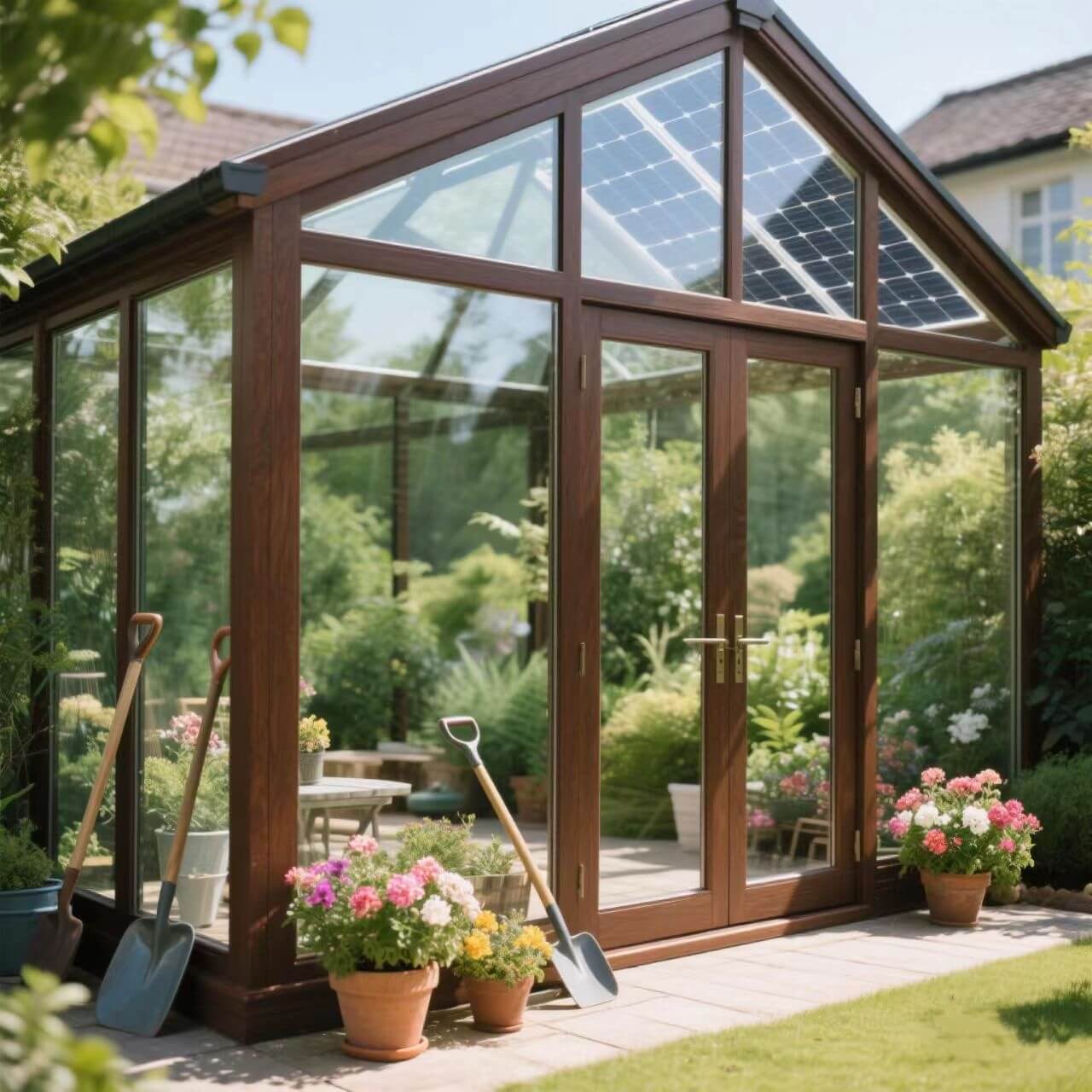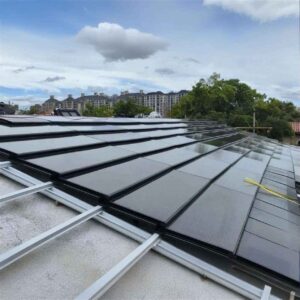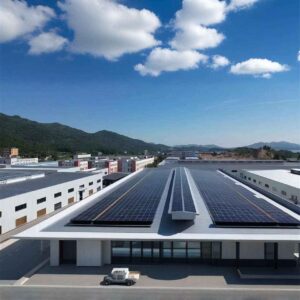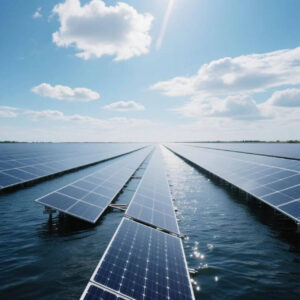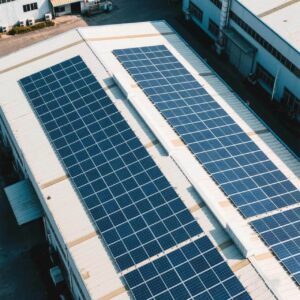Название проекта: Shanghai Private Villa Community BIPV Sunroom Project
Тип проекта: High-end Residential Building Integrated Photovoltaics
Установленная мощность: 200KW
Обзор проекта
Located in Shanghai’s premium villa community, this project provides customized
BIPV sunrooms for 6 detached villas, upgrading traditional glass rooms into
intelligent power-generating sunrooms. Utilizing our top-tier transparent BIPV
technology, it maintains elegant architectural aesthetics while achieving clean
energy self-sufficiency, setting a new benchmark for high-end residential
green lifestyle.
Технические характеристики
• Project Scale: 200KW installed capacity
• Service Coverage: 6 detached villas
• Unit Capacity: Average 33.3KW per household
• Sunroom Area: 1,200㎡ (total for 6 units)
• Power Generation Efficiency: Transparent module efficiency ≥19.8%
• Annual Power Generation: Approximately 260,000 kWh
• Carbon Emission Reduction: ~130 tons CO₂ annually
• Light Transmission Design: 60% transparency for abundant indoor lighting
• Wind Resistance: Grade 14 strong wind resistance (≥60m/s)
• Snow Load Capacity: ≥2.0kN/㎡
- Срок службы: 25 лет гарантии на производство электроэнергии
Основные моменты проекта
• Custom Design: Personalized customization based on each villa’s architectural style
• Smart Home Integration: Integrated intelligent shading and ventilation systems
• Energy Storage Support: Equipped with residential energy storage systems for 24/7 green power
• Aesthetic Value: Tempered glass texture enhancing building grade
• Comfort Environment: Year-round constant temperature sunroom expanding living space
• Investment Returns: Annual electricity savings of ~\$18,000, average 7-year payback
Homeowner Benefits Analysis
• Economic Returns: Dual revenue model of self-consumption + grid feed-in
• Property Appreciation: Green tech residence increasing property value by 8-12%
• Quality of Life: Year-round comfortable recreational space
• Environmental Value: 75% reduction in household carbon footprint
• Tech Experience: Real-time monitoring of power generation revenue via mobile APP
Отзыв клиента
“The BIPV sunroom JMB created for us completely exceeded expectations.
Not only is it stylish and elegant in appearance, but the power generation
performance is also outstanding. Now our sunroom has become the envy of neighbors,
and watching the daily power generation revenue grow gives us a real sense of
achievement. This was a very successful investment.”
Технические инновации
• Curved skylight design maximizing lighting area and power generation efficiency
• Smart dimming technology automatically adjusting transparency based on indoor needs
• Frameless installation process achieving perfect building integration
• Thermal insulation LOW-E coating for summer cooling and winter warming
• Self-cleaning surface treatment reducing maintenance frequency
Демонстрационное воздействие
• Became typical case of high-end residential BIPV application in East China
• Promoted optimization of Shanghai’s green building subsidy policies
• Enhanced awareness and acceptance of BIPV technology among surrounding community owners
• Provided successful business model for villa-type high-end residential BIPV applications
ЧАСТО ЗАДАВАЕМЫЕ ВОПРОСЫ
спросите нас
все, что угодно
How does the transparency affect the power generation efficiency of photovoltaic glass in sunrooms?
While 100% transparent solar panels are still emerging, semi-transparent and partially invisible solar panels are already being used in windows, facades, and skylights. Transparent solar panels are generally less efficient than traditional monocrystalline or polycrystalline solar panels. A transparency of about 80% has been achieved with power conversion efficiency of about 12–15% in transparent solar cells. For sunroom applications, this balance between transparency and efficiency allows natural light while generating electricity, making the space both functional and energy-producing.
What are the maintenance requirements for transparent photovoltaic glass in sunroom applications?
Solar panels include durable tempered glass that can withstand most weather conditions and only require infrequent cleaning. Clean the glass surfaces regularly to maximize natural light and check for any damage or wear that could compromise insulation. For sunrooms, this means quarterly cleaning of accessible surfaces and annual professional inspection of overhead panels. Solariums require more maintenance because you’ll need to clean the glass panels inside and out, including the less accessible ones that make up the roof.
How does the transparent photovoltaic glass control light and heat in sunrooms?
Photovoltaic smart glass converts ultraviolet and infrared to electricity while transmitting visible light, enabling sustainable daylighting. The latest transparent PV glass makes it possible to generate energy while also controlling the light in a room or growing plants in greenhouses. The selective absorption of UV and IR radiation reduces heat gain while maintaining natural lighting, creating a more comfortable environment compared to regular glass sunrooms.
What are the structural requirements for installing transparent photovoltaic glass in sunrooms?
The structural requirements depend on the weight and electrical integration of the photovoltaic glass system. Unlike traditional sunroom glass, PV glass includes integrated electrical components and junction boxes that require proper support and weatherproofing. The frames must accommodate electrical conduits and connections while maintaining structural integrity for weather loads including wind, snow, and thermal expansion.
Can transparent photovoltaic glass sunrooms be used year-round and in all climates?
Temperature is always a main concern in sunrooms, and the LowE glass can help minimize the fluctuations in temperature. Heating and cooling units can be installed into the glass structures so you can enjoy the space during all four seasons. The photovoltaic function actually helps by generating electricity to power heating and cooling systems, making year-round use more economically viable. However, extreme climates may require additional thermal management beyond what the PV glass provides.
What are the cost considerations for transparent photovoltaic glass versus regular sunroom glass?
Transparent photovoltaic glass has higher upfront costs due to the integrated solar technology, but provides long-term energy savings that can offset the initial investment. The glass you put in a sunroom should have a U-factor of less than 0.3. PV glass often meets high performance glazing standards while adding energy generation capability. The payback period typically ranges from 8-15 years depending on local electricity rates and solar incentives.
How does transparent photovoltaic glass affect condensation and moisture control in sunrooms?
Condensation is caused by poorly fitted or poorly ventilated glass. When condensation happens, mold can form. Condensation between the panes of glass could indicate that the seal is failing and needs attention. Photovoltaic glass systems require proper sealing and ventilation design to prevent moisture issues. The electrical components must be protected from condensation, making proper installation and maintenance critical for long-term performance.
What safety considerations are unique to transparent photovoltaic glass sunrooms?
Safety considerations include both electrical and structural aspects. The electrical system requires proper grounding, GFCI protection, and emergency shutdown capabilities. The glass itself must meet safety glazing standards for overhead applications. Additionally, the transparency may create glare or visual discomfort that traditional tinted glass would avoid, requiring careful orientation and possibly supplementary shading systems.

